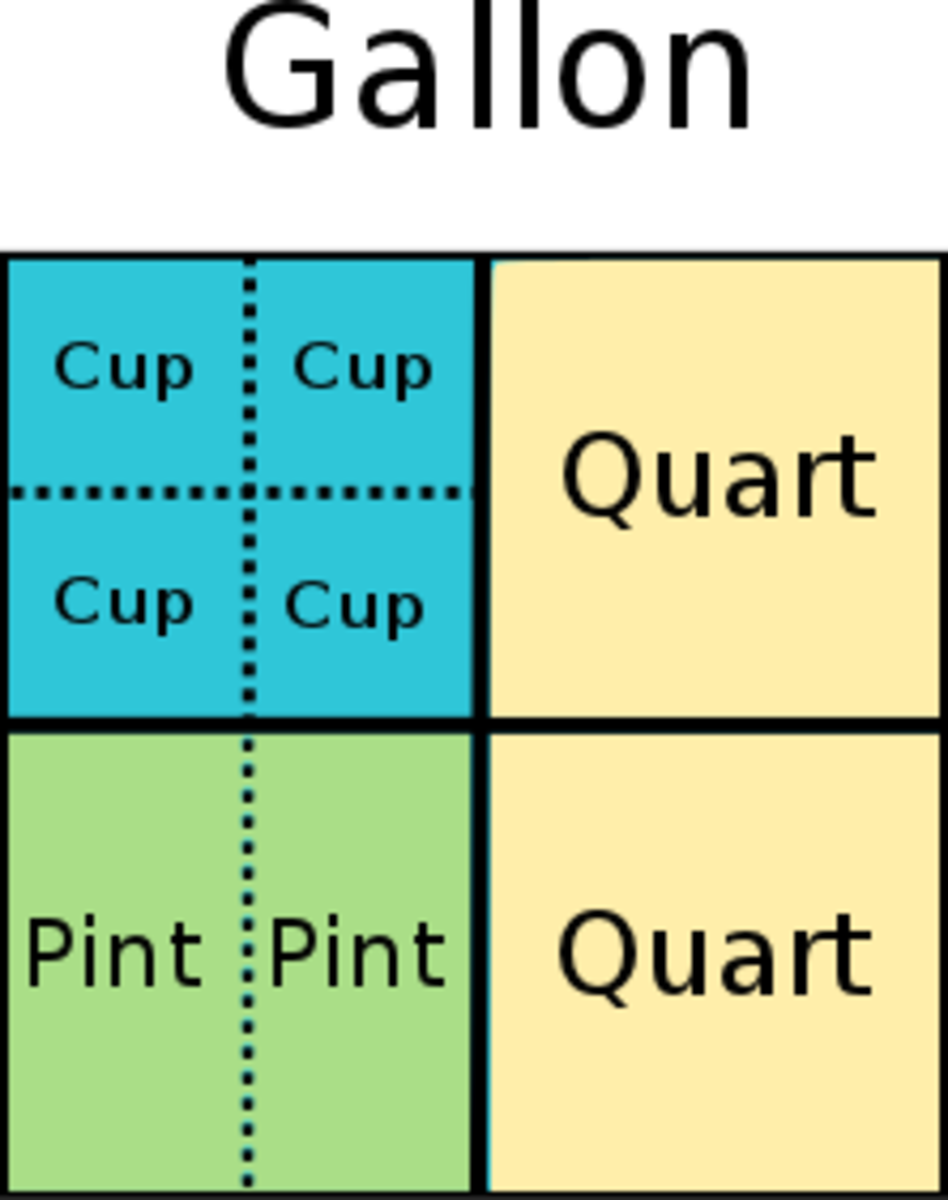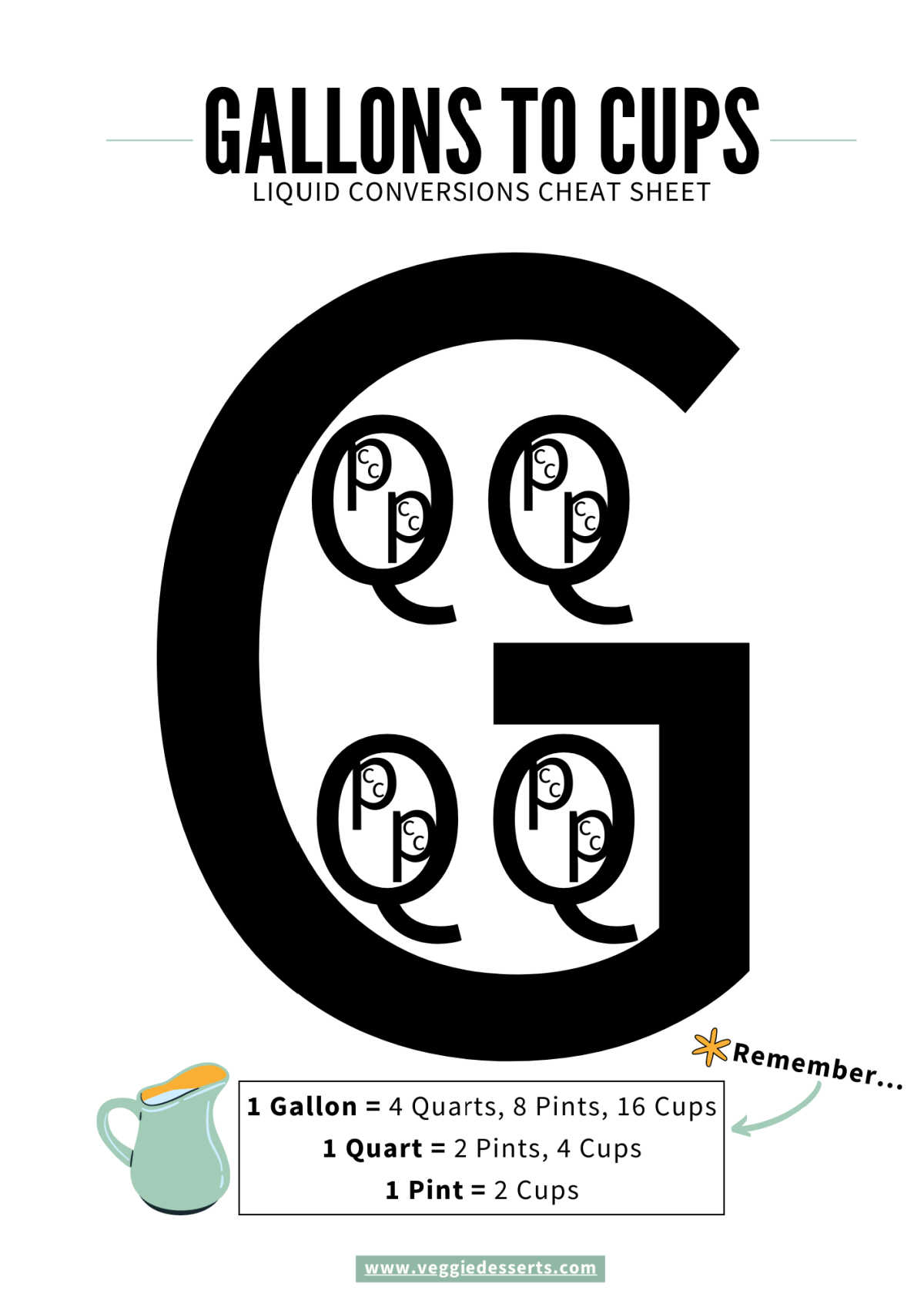

The set valuation of a cup equals 236.6 milliliters or one-half of a US pint. But one should also be aware that the valuation of a cup may differ in various places because the size of a cup changes with geographical modifications. The measurement of volumes of fluids is what is basically the use of a cup, and this specifically is utilized in cooking. To define the measurement of a metric cup, you need to understand that is equal to 250 millimeters which are in volume. What is Cup?Ĭups are categorized as a unit of measuring volume in the Imperial Systems of Measurement and the United States Customary. To know about it in detail, read further. This guide comprises the formula of converting cups into gallons, the relation between the two units, their differences, current uses, and some basic conversion values. Hence, we are here with a detailed guide to converting cups in gal so that you do not have to fetch every little information related to these units. With cups and gallons both being the measuring units of volume, it is necessary to understand the relation between the two. The conversion of cups to gallons is one such conversion.

And when the talk is about getting the conversions of these units to one another, it seems like an unfathomable task. In the lieu of differences in the education system, number system, and the system of setting values across the world, there are multiple measuring units used in different parts of the world. Liter to Gallon (US) Conversion Table Liter ġ5 L, l = 15 × 0.2641720524 gal (US) = 3.Almost everyone is aware that the trickiest conversions are the volume conversions, and one wrong value can lead to a disaster of what is in the making. The imperial gallon is used even more sparingly than the US gallon, with most countries around the world using liters when referencing fuel. Gallons are also widely used in fuel economy expression in the US, as well as some of its territories. History/origin: The term gallon most closely originates from "galon" in Old Northern French and developed as a system for measuring wine and beer in England, resulting in measures such as the wine gallon, ale gallon, and imperial gallon.Ĭurrent use: In the United States (US), gallons are often used for larger containers, such as half gallon tubs of ice cream or one-gallon cartons of milk. A US fluid ounce is therefore 1/128 of a US gallon while an imperial fluid ounce is 1/160 of an imperial gallon. Further differentiating the US and the imperial gallon, a US gill is divided into four fluid ounces, while an imperial gallon is divided into five. A cup is comprised of two gills, making one gallon equal four quarts, eight pints, sixteen cups, or thirty-two gills. Quarts are then divided into two pints and pints are divided into two cups. In both systems, the gallon is divided into four quarts.

In contrast, the imperial gallon, which is used in the United Kingdom, Canada, and some Caribbean nations, is defined as 4.54609 liters. The US gallon is defined as 231 cubic inches (3.785 liters).

Gallon (US)ĭefinition: A gallon is a unit of volume specifically regarding liquid capacity in both the US customary and imperial systems of measurement. It is also used to measure certain non-liquid volumes such as the size of car trunks, backpacks and climbing packs, computer cases, microwaves, refrigerators, and recycling bins, as well as for expressing fuel volumes and prices in most countries around the world. However, due to the mass-volume relationship of water being based on a number of factors that can be cumbersome to control (temperature, pressure, purity, isotopic uniformity), as well as the discovery that the prototype of the kilogram was slightly too large (making the liter equal to 1.000028 dm 3 rather than 1 dm 3), the definition of the liter was reverted to its previous, and current definition.Ĭurrent use: The liter is used to measure many liquid volumes as well as to label containers containing said liquids. History/origin: There was a point from 1901 to 1964 when a liter was defined as the volume of one kilogram of pure water under the conditions of maximum density at atmospheric pressure. One liter is equal to 1 cubic decimeter (dm 3), 1,000 cubic centimeters (cm 3), or 1/1,000 cubic meters (m 3). Definition: A liter (symbol: L) is a unit of volume that is accepted for use with the International System of Units (SI) but is technically not an SI unit.


 0 kommentar(er)
0 kommentar(er)
